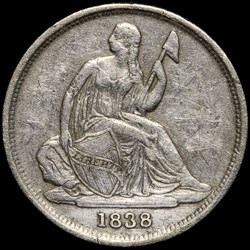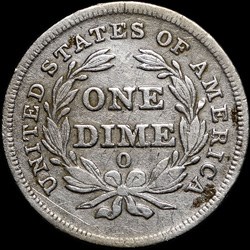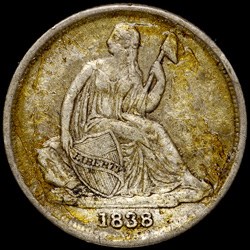NCS Conservation: Effects of Improper Cleaning
Posted on 7/12/2016
When a coin comes back graded with the qualifier “improperly cleaned” it can be disappointing. Some numismatists almost take it personally as an accusation rather than the simple description of the coin that it is. As numismatists we strive to acquire coins that are as natural and damage free as possible. This drive is so great that occasionally coins can receive treatments that may be intended as beneficial but in actuality are very damaging. What makes a coin improperly cleaned is important to identify when considering new coins to add to the growing collection.
When we speak of cleaning on a coin we are almost always referring to a type of damage to the original surface. Identifying improperly cleaned coins is important as those coins with damage trade at a diminished premium. Improperly cleaned coins typically come in two distinct types: improperly cleaned by mechanical means and the less common chemical means.
Typically a mechanical improperly cleaned coin will feature certain telltale signs. Of these features, the most prominent are the presence of large areas of parallel scratches. These parallel scratches can be across the entire coin or in just a particular area. Looking at the coin at a variety of angles will help make the nature of these scratches clear. The scratches are caused by metal removed from the surface of the coin and is an indication of a coin that has been cleaned through mechanical means. While some other phenomena can make the appearance of parallel scratches on the surface of a coin, the scratches of a coin that has been improperly cleaned are distinct in one important way. Scratches that continue from the field (background) over the devices(details) and legends are a sign of improper cleaning.
 |
 |
| 1838-O Dime After NCS Conservation The bright area around the date is from the camera picking up all the parallel hairline scratches of mechanical improper cleaning. Click images to enlarge. |
|
While patches of hairline scratches are a quick identifier for most coins that have been improperly cleaned, there are other features to look for. An even granular texture to the surface of the coin or an unusual color, especially with copper coins, can be indications that a coin has been improperly cleaned by chemical means.
Once a coin has been improperly cleaned it is natural to question if a coin can be properly cleaned. It's a common request of NCS services. When a coin is improperly cleaned, surface metal has been forcibly removed from the surface by either mechanical or chemical means. Once this metal has been removed, sadly this cannot be replaced. In the case of a coin that has been mechanically cleaned, any attempt in removing scratches will result in additional scratches, further damage, and a less desirable coin.
While it may not be possible to reverse the effects of an improper cleaning, discovering a coin in your collection that has been improperly cleaned is far from a loss. A coin that has been improperly cleaned may still be authenticated and certified with a qualifier. By examining the features that make this coin deemed improperly cleaned, coins with similar damage may be better identified in the future.
NCS is an independent member of the Certified Collectibles Group.
Stay Informed
Want news like this delivered to your inbox once a month? Subscribe to the free NGC eNewsletter today!


